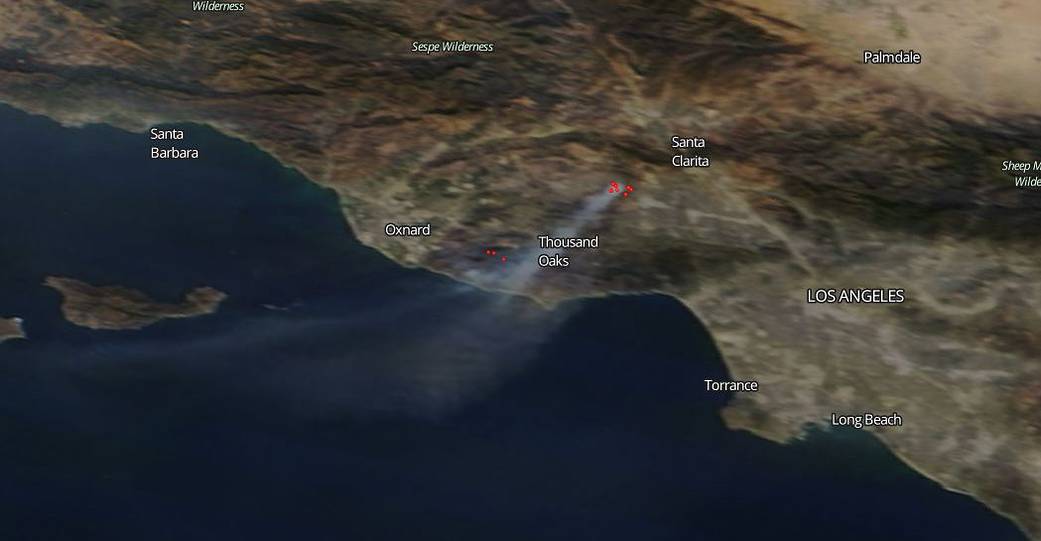Thousand Oaks, California has been through a lot lately and its problems are not over yet. The Woolsey Fire broke out on November 08, 2018 and has already consumed 99,815 acres as of November 12. The cause of this blaze is still under investigation by authorities. To date 435 structures have been destroyed and two civilians have died in the fire. More than 200,000 residents have had to evacuate the area. The fire destroyed nearly everything in its path as it raced through northwestern Los Angeles into the suburbs of the San Fernando Valley all the way through the Santa Monica Mountains and down to the rocky coast of Malibu. The area around Malibu was especially hard hit. A huge chunk (83%) of National Parks Service land in the Santa Monica Mountains National Recreation Center has burned. This National Park has been closed to the public for safety reasons. The fire is only 35% contained.
The Santa Ana Winds, coupled with higher average annual temperatures as the climate in the area changes, tinder-dry brush and a lack of rain in recent years, make the “perfect ingredients” for explosive fire growth around the state. Firefighters will continue to quell further perimeter growth. Red Flag Warning for the area will continue with moderate Santa Ana winds from 20 to 30 mph. The winds will persist through the day with gusts around 55 MPH.
NASA’s Earth Observing System Data and Information System (EOSDIS) Worldview application provides the capability to interactively browse over 700 global, full-resolution satellite imagery layers and then download the underlying data. Many of the available imagery layers are updated within three hours of observation, essentially showing the entire Earth as it looks “right now. This satellite image was collected on November 12, 2018. Actively burning fires, detected by thermal bands, are shown as red points. Image Courtesy: NASA Worldview, Earth Observing System Data and Information System (EOSDIS). Caption: Lynn Jenner with information from CAFire and Inciweb.



























